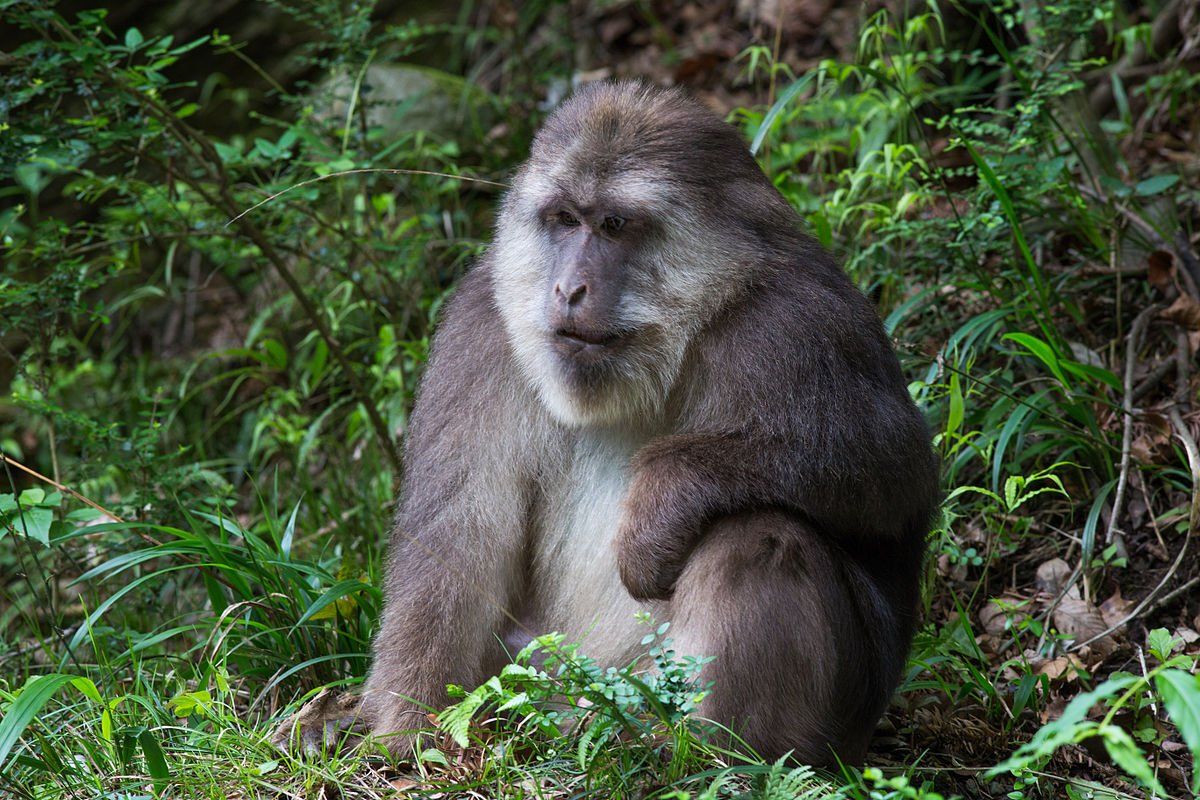The Tibetan macaque, scientifically classified as Macaca thibetana, boasts a fascinating presence across the landscape, known by various names including the Chinese stump-tailed macaque or Milne-Edwards’ macaque. Its habitat stretches from the eastern regions of Tibet to the lush forests of eastern Guangdong, and from the northern reaches of Shanxi to China. Intriguingly, there have been documented sightings of this primate species in the northeastern regions of India, adding a layer of geographical complexity to its distribution.
Tibetan Macaque Facts: Profile, Traits, Range, Diet, Baby, Pet
The Tibetan macaque emerges as a captivating emblem of the intricate interplay between organisms and their environments. From its diverse habitat preferences to its role in shaping subtropical forest dynamics, this species embodies the complexity and resilience of life in biodiverse ecosystems. As we strive to understand and conserve the natural world, the Tibetan macaque serves as a poignant reminder of the interconnectedness of all living things and the imperative of stewardship in safeguarding our planet’s biodiversity.
Habitat and Geographic Range
This captivating species of primate thrives in a diverse array of habitats, primarily favoring subtropical forests. Within these verdant ecosystems, the Tibetan macaque exhibits remarkable adaptability, occupying niches ranging from dense evergreen forests to areas with a mix of deciduous foliage. A key aspect of its habitat preference is the altitude range it inhabits, typically found at elevations spanning from 5 to 2,500 meters (approximately 16,400 to 8,200 feet) above sea level. This elevation gradient offers a spectrum of environmental conditions, from the dense lowland forests to the more temperate zones found at higher altitudes, providing the Tibetan macaque with a varied and dynamic living space.
The Intricacies of Subtropical Forest Life
Within the tapestry of subtropical forests, the Tibetan macaque thrives amidst a symphony of life forms and ecological interactions. Its presence contributes to the intricate web of biodiversity that characterizes these rich ecosystems. From the towering canopy of ancient trees to the lush undergrowth teeming with diverse flora, each layer of the forest provides a unique niche for the macaque to explore and exploit. Through its foraging behaviors, social interactions, and role as a seed disperser, this primate species plays a vital role in shaping the structure and function of its habitat.
Vertical Variation: Navigating Altitude and Terrain
One of the remarkable features of the Tibetan macaque’s habitat is its vertical dimensionality. Spanning from the forest floor to the uppermost reaches of the canopy, this species demonstrates a remarkable ability to navigate and thrive across varying elevations and terrain types. From scrambling along rugged slopes to swinging adeptly through the branches of towering trees, the Tibetan macaque’s agility and adaptability are on full display. This vertical variation not only offers macaque access to a diverse array of food resources but also presents unique challenges and opportunities for survival in a dynamic and ever-changing environment.
Ecological Interactions and Conservation Considerations
As a key member of the subtropical forest community, the Tibetan macaque engages in a myriad of ecological interactions that shape the dynamics of its habitat. From feeding relationships with other species to social hierarchies within its troop, the macaque’s presence reverberates throughout the ecosystem. However, alongside its ecological significance comes the pressing need for conservation efforts to safeguard its habitat and ensure its continued survival. Balancing the needs of human populations with the preservation of these vital ecosystems presents a complex challenge, requiring thoughtful management strategies and collaborative conservation initiatives.
Other Recommended Reading
- Dent’s Mona Monkey Facts | Profile | Habitat
- Finger Marmoset Facts – Pet | Cost | Monkey
- Adult Marmoset – Pygmy Marmoset Description
- Baby Pygmy Marmoset – Monkey | Size | For Adoption
- Marmoset Pet Monkey – Care | Price | For Sale
- Pygmy Marmoset Pet – Care | Price | For Sale
- Golden Marmoset – Monkey | Size | Baby | Lion
- 30 Interesting Facts about Jane Goodall
- How Many Types of Macaques Are There?
- Is it Good to Have a Macaque as A Pet?
- How Much is the Chimpanzee Strength?
- Interesting Facts about Chimpanzees Habitat
- Amazing Chimpanzee Adaptations for Survival
- 6 Very Interesting Baby Chimpanzee Facts
- Macaque Monkey Baby Life Cycle and Facts
- Bush Baby Animal Description and Facts
- Is a Bush Baby Pet Legal or Ethical?
- Lesser Bushbaby Description | Profile | Facts
- Cute Bush Baby or Galago Profile and Facts
- African Bush Baby Profile and Description

